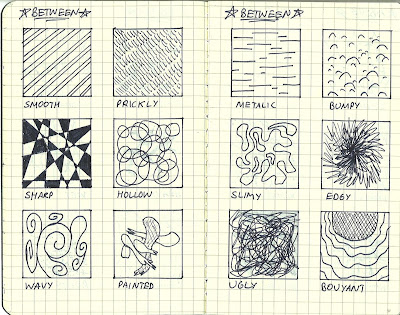*Note* - these pictures are almost identical to the previous blog "MODEL 1: Textures and Artworks embedded within the model" pictures. The only difference is that with this model, i included the terrain.
With all said and done, please refer to the pictures stated above for a more detailed look within the interior of the sections.
 This above is a section i used to create this model. The influence of MOFFAT's "Harlequin" artwork of shapes (below - verb: COLLIDE) and GASCOIGNE's photograph of "Night Cries: A Rural Tragedy" movie scene (above - verb: SHIFT).
This above is a section i used to create this model. The influence of MOFFAT's "Harlequin" artwork of shapes (below - verb: COLLIDE) and GASCOIGNE's photograph of "Night Cries: A Rural Tragedy" movie scene (above - verb: SHIFT).Materials used for the *below* section were "organic and sharp". Organic referring to the floor of the room (wooden) and sharp referring to the stairs (limestone).
Materials used for the *between* section were "prickly and hollow". Prickly referring to the stairs (rough concrete) and hollow referring to the walls (plaster).
Materials used for the *above* section were "shiny and reflective". Shiny referring to the walls (glass) and reflective referring to the stairs (steel)







































